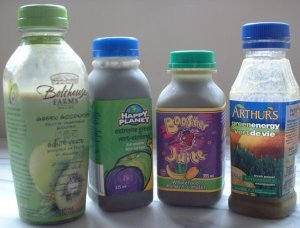
As someone who makes a point of avoiding most pre-packaged food that comes from the typical North American supermarket, it is undoubtedly hypocritical of me to admit the following…
I buy pre-packaged Indian food.
Not on any regular basis, mind you, but whenever I make it across town to Little India, and I go a little wild in the Indian grocery stores. We fill our shopping basket with little boxes of things like paneer, frozen iddly, gulab jamun mix (or even canned gulab jamun) and then we come home and compile dinner.
In our defense, most pre-packaged Indian foods are pretty healthy to begin with – most stuff is completely absent of preservatives, the methods of canning and boil-in-bag packaging being more than enough to keep the food tasty.
We do this mostly to allow us to try new dishes that aren’t always available in restaurants and to be able to see what things are like before attempting to cook up a pot of stuff ourselves.
This is our most recent “Boxes of India” meal. It’s not the same as making everything from scratch, to be sure, but just as soon as I can track down fresh mustard leaves, I’ll be trying a homemade version of the saag.
Clockwise from the top: frozen paratha, pulao rice (homemade), Goan fish and eggplant (made from a spice mix blended with coconut milk with fresh sole and eggplant added), Sarsan ka Saag (stewed mustard leaves), Patra Curried with mango chutney, frozen veggie samosa, and channa daal (homemade).
 There’s nothing like a tasty glass of pond slime to get you started in the morning.
There’s nothing like a tasty glass of pond slime to get you started in the morning.
